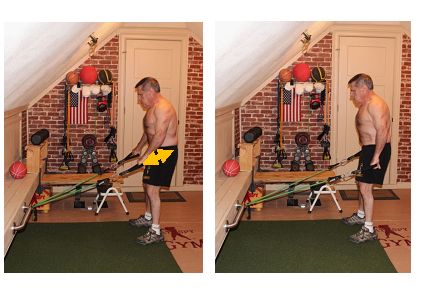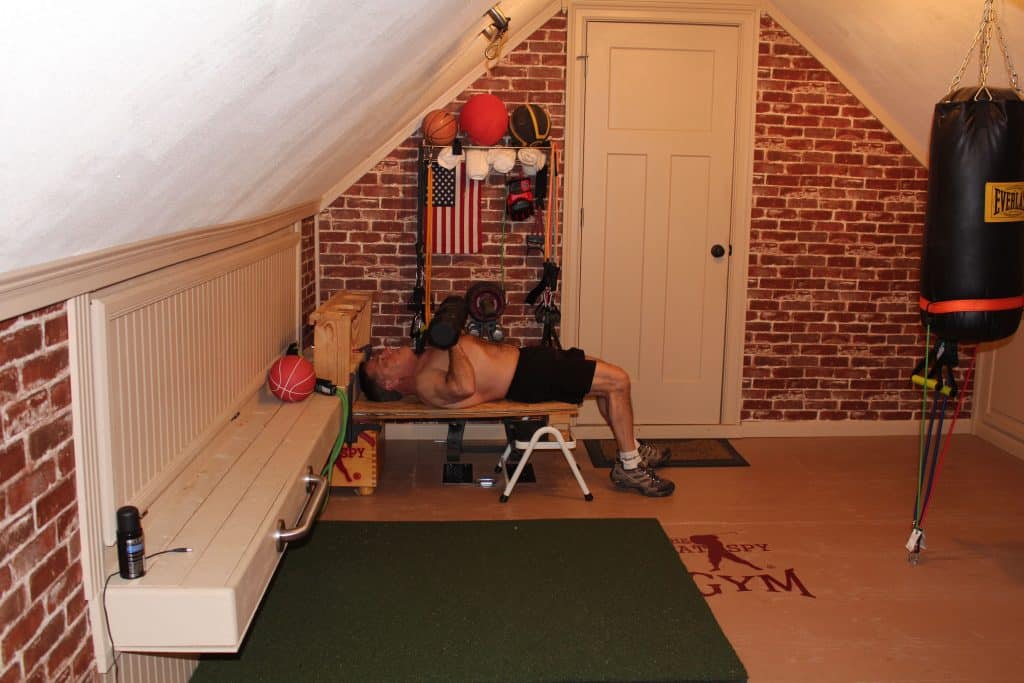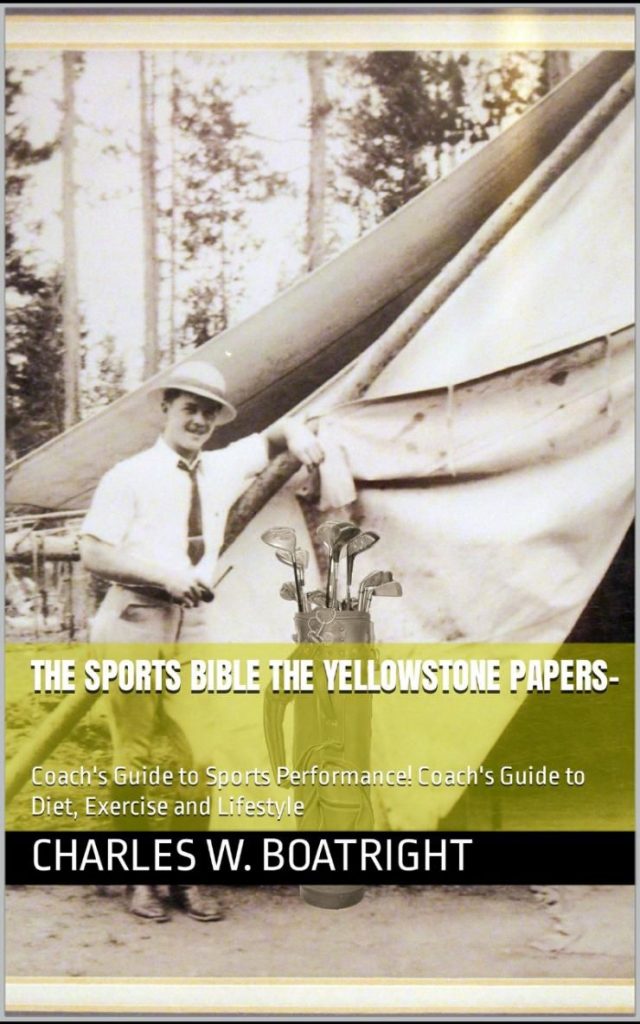THE SATURDAY’S SPORTS PAGE for LIFE
THE QATSPY® Quapaw Avid Tailgate Sports & Performance Reporter

THE SPORTS PAGE for LIFE- Covering and writing about Sports as a means to help us to achieve a successful, prosperous, and active lifestyle!
By: Charles W. Boatright, President of THE QATSPY®
KIDS’ Sports Injuries Caused by OVERUSE– This Occurs when Kids: focuses on ONE SPORT, Lack of both proper Mechanics and REST during the WEEK! Pediatricians/Sports Specialist Emphasize Kids need to play Multiple Sports and get their REST
To provide a perspicuous on what Specialization/Overuse is–
Let’s use the weakest link in a chain analogy, but instead of just having one weak link, in Specialization/Overuse your kids has several weak links instead of just one weak link. Then when a load is applied to the entire chain, instead to just one link breaking down, the chain fails over several links.
This is exactly what kids are doing to their body’s when they specialize in sport and overuse their muscles, tendons, ligaments, and joints.
My Personal Experience with One Sport of Running
Here is a great personal experience that I had in my mid-30’s by NOT participating in multiple sports. In the U.S. ARMY. We ran everywhere we went for training and conditioning that I continued to do until my mid-30’s when my knees and hip gave out and prevented me from running.
So, I decided to switch to biking thinking that it would reduce the wear, tear, and discomfort on my knees and hip, which it did. I assume that there wouldn’t be any issues with training and conditioning in riding the bike. That assumption didn’t last very long, I found out within the first five miles that biking takes an entire different set of muscles, like that chain example above.
Those 30- miles a week that I ran didn’t prepare me for 90 mile per week bike rides (15 miles x 6 days per week).
It took about 5-miles on a bike to figure out I needed to train and condition myself for the 90- miles per week rides that I wanted to do with one day off for rest. This is why you want your kids to be involved in multiple sports for proper development and avoid to injuries!
Sports Performance with proper Ergonomics & Mechanics
Proper ERGONOMICS and MECHANICS are just as much a part of sports as they are a part of everyday life that we incorporate into our work to avoid injury from repetitive motion. Repetitive motion even performed properly can lead to excessive wear and tear on the body if we don’t perform relief exercises and get adequate rest, especially in the case of our kids that are still developing.
We are seeing an increased number of kids showing up in emergency rooms, pediatric clinics, and orthopedic surgeon offices with injuries caused by what is referred to as Specialization/Overuse. This Specialization/Overuse is being caused by kids focusing on one sport year round and not getting the proper rest days, or downtime, needed during the week. This rest time allows their body’s to recover, repair, and rejuvenate with the use of relief exercises.
Our Body’s Natural R & R
Our body has the natural ability to recover, repair, and rejuvenate itself from normal use with adequate rest and relief exercises, like yoga. Yoga is a great relief exercise that is an excellent method to allow the body to heal, recover, and maintain its flexibility. Lack of flexibility is another cause of injuries for all of us.
You and your child has to develop discipline to incorporate Yoga into your training, because it isn’t the most exciting training to do. I have to discipline myself to do my yoga before and after my workouts.
Yoga also increases our balance, stability, range of motion, and helps prevent injuries in addition to providing flexibility. Even kids that we consider extremely dexterous can benefit from Yoga. Yoga is also beneficial for our cognitive ability and development.
Yoga is crucial before our exercise routines, practices, and gameday to maintain joint and muscle health, especially as we age. I’m over the age of 65 and yoga along with my exercise routine is more important to me now to prevent injuries than before to maintain my balance, and my flexibility for staying active. You DO NOT want to lose your mobility, balance, and stamina to remain active.
The Need to Develop the Fine Permanent Motor Skills in Our Kids
It is important for parents to encourage their kids to be involved in sports and help them develop their specialize skills. These skills involve developing their fine/gross motor skills. Malcolm Gladwell book, entitled Outlier states that it takes 10,000 man-hours of training to become highly proficient at a sport or high level performance.
But, what is at risk with kids with this Specialization/Overuse are that their young bones, muscles, ligaments, tendons, and joints are still developing and forming. Specialization/Overuse can interrupt this vital childhood developmental process. R&R (Relief &Rest) is essential for kids to allow their body’s to repair and rejuvenation.
Even we adults can experience a similar issue by not getting the proper rest and sleep that interferes with our body’s natural ability to repair and rejuvenate itself, especially with our skin over the age of 40. I don’t know if too many adults over the age of 40 that wants to look older.
Hay Parents, you can use your strength training to reconfigure how the hypothalamus gland works that is located at the base of our brains. The hypothalamus gland regulates our aging process. Strength training and staying active can give the hypothalamus gland the perception that your body is actually younger than what its actually is. Below, I’m 66 years old and stay active.

(Photo)
I’m actually model our Online Store’s Sporty Safari Cockpit Aviation Collection & Gear at age 66.
R & R, by Taking a Day Off for Downtime for Kids
It is essential that even we adults take one or two days off from our workout routines and sporting activities. Our bodies are telling us this loud and clear. But there is one issue that kids aren’t aware of that we adults are, especially if we over the age of 60. This is call sore and aching joints and muscles.
The issue with kids is that they have over abundance of adrenaline and energy that can mask something more than just sourness, like that of serious long term injuries that can be irreversible.
Kids need to following these recommendations:
· Allow for adequate Recovery time between practices or games.
· Not let their abundant energy and adrenaline mask injuries to muscles, joints, and bones from over use that are still forming. Injuries can interrupt their growth process that has lifelong consequences especially to their joints.
· Insurer that your kids take adequate time to warm up and cool down.
· DO NOT specialize in one sport that is year round, but be involve in multiple sports, exercises, and hobbies.
· Incorporate ergonomics into training, practice, and sports performance.
· Perform relief exercises like yoga before and after a practice or performance.
Importance of Strength Training
Please read Mayo Clinic’s article on Strength Training for kids Mayo Clinic on Strength Training for Kids
Kids over the age of 9 can start and benefit from strength training for their balance, cognitive development, coordination, to prevent injuries, and to improve their performance. DO NOT confuse strength training with weight training/lifting or powerlifting, they aren’t the same. Keep it light until they are 12- years old than gradually and slowly increase weight and reps.
I perform weight training and I perform strength training with reps in sets with 20- second rest period between sets.


Kids that participate in sports like baseball, soccer, tennis, and basketball, for example, can benefit greatly from strength training with light weights or resistance tubing. Remember it isn’t the amount of weight that you can work out with a few times; but the number of reps and sets that you can do that builds stamina and strength.
Muscle Memory, Ergonomics, and Threshold Skills
The first rule of ergonomics is to avoid repetitive motion and perform relief exercises with proper rest, and downtime after practices and games. Those skills that your kids are working on are 90% Mental, or muscle memory. The key is to remind your kids that their skills are mental functions, or performed by developing their muscle memory. Incorporate challenges into your kid’s practices focusing on proper mechanics, even during their practice time.
Encourage your kids to play multiple sports and expand their interest into other areas including the arts and hobbies. These hobbies could lead them into a career later on in life. College degrees aren’t any more important than developing trade skill. Myself I enjoy carpentry, welding, and aviation.
Because kids are more flexible, they can sometime neglected warming up and cooling down periods that are essential to avoid Overuse issues, especially pitches. Muscles have to be stretched and joints lubricated for performance and to avoid long term injuries. Yoga is a great option for kids to warm up and to cool down. Include Yoga into kids exercise regimen.
Childhood Developing of Permanent Fine Motor Skills
Early Childhood Development actually centers on developing those permanent fine motor skills that are developed in kids before the age of 12. This is the time kids need to develop their fine permanent motor skills that are located in their low threshold muscles (in the wrists and forearms). These fine motor skills are what make athletes like Tom Bradley and Tiger Woods the high performing athletes that they became.
Kids will have one shot at developing their permanent fine motor skills during this time frame, there are NO DO OVERS HERE! But remember these are still mental skills that are developed with kid’s muscle memory.
Developing Skills in The Low Threshold Muscle to Prevent Injuries
The key in developing these fine permanent motor skills for kids is just as much a mental endeavor as it is a physical effort within their training and practicing. In sports, the mental component makes up the majority of our performance and is a safer process for kids to use, if you know how to take advantage of the mental performance and mental imagery.
Even Yogi Berra realized the importance of the mental component with his quote about baseball- Baseball is 90% mental and the other half is physical. Yours and your kids’ performance will come down to predominantly their mental ability to develop their muscle memory under actual performance-like conditions to form those natural instincts.
If your recall TOP GUN:MAVERICK where Maverick tells Rooster to- Don’t Think, just DO! I hear golfers talk about developing swing thoughts; but a golfer’s golf game doesn’t come down to swing thoughts, but their instincts, located in their subconscious mind. The more you think the less you perform. An athlete has three part of their mental game- Conscious mind (Thinking), subconscious mind (Instincts), and their unconscious mind (treats), or their permanent mind.
Believe me, regardless how long you practice and/or train, if your skills aren’t instinctive, you certainly won’t have those skills available to you or your kid’s performance on the field or court. I can Guarantee IT! Once you step foot onto the field/court your instincts will override your thought process.
The only way to develop yours and your kids’ natural instincts are under actual playing-like conditions. You and your kids will need to develop skills under gameday like conditions to develop your or their instincts. The subconscious mind doesn’t distinguish between your practice or your performance.
But here’s the kicker, especially with golfers, that hit shots on the range then go to the golf course. Those to conditions don’t resemble each other, so the subconscious mind is totally confused and it trashes your practice time and searches for what matches course conditions. Whatever that it recalls last that matches gameday conditions.
You can improve your practice time with challenges, like I did in my Orange Bucket Challenge, hitting 295- yard tee shots, below:
Orange Bucket Introduction
Orange Bucket Demonstration
Production by WJTV-12 of the Orange Bucket
Please take the time to read my interview with Colonel George R. Hall that was held at the North Vietnam POW Camp, designated Hanoi Hilton, for seven-and-a-half-years that used his golf game in his 6 x 10 cell to survive then after his released shoot his handicap of four (4) at a PGA Pro-AM in less than 5- weeks.
Reducing the Incidence of Overuse in Kids
You can actually reduce your kid’s practice time by focusing on their mental game more to develop their natural instincts. This can be done by creating mental challenges during their practice and/or training time that they will encounter on gameday. But both their practice and/or training sessions has to resemble gameday as close as possible.
This mental development falls in line with Abraham Lincoln’s quote about chopping down a tree. Give me six hours to chop down a tree and I will spend the first four sharpening the axe. This is yours and your kid’s natural instinctive skills.
Here’s a great sports physiology principle from Ecclesiastes 10:10 written by King Solomon–
If the ax is dull and its edge unsharpened, more strength is needed, but skill will bring success. What King Solomon is saying here is that if you don’t focus on developing and sharpening your mental skills, muscle memory, you will have to make up for what you lack in instinctive skills with hard physical work, that leads to Overuse.
Believe me, I have spent countless hours on a driving range before without seeing one ounce of improvement in my golf game on the golf course. But when I developed two simple preset techniques, basic fine motor skills of Palmarflex and Pronation with my wrists, my entire golf game was transformed to a natural instinctive process without the hard work and of sore muscles and long hours on the range. I can actually work on my golf game in my training facility by just use the short pitch and chip shots. Look at my three videos that I did for WJTV-12 Sports Zone, above.
The 5 Rules of the Subconscious ZONE Performance
- Develop Natural and Repetitive Routine tasks.
- Practice and perform under actual conditions that must exist in both.
- Rely on a high degree of: relaxation, confidence, and muscle memory.
- Allow the Subconscious mind to project in order to take over being IN THE ZONE. This is that mental performance that can be done during your kids’ downtime.
- The greater the conscious effort reduces the subconscious intuitive response. Our performance has to be instinctive based.
If you and your kids can focus on these 5- Rules of the Subconscious mind; your entire performance will improve in any other areas of their and your endeavors. This is why sports and hobbies are important to your kid’s life.
If you want to give your kids a leg up on their competition, incorporate Sports Psychology with the ability to develop fine motor skills with a great fitness program.
These books below are great for those that homeschool your kids to include Sports Psychology that is based on Biblical principles. Let me introduce two of my NEW books- The Sports Bible, The Yellowstone Papers-
Coach’s Guide to Sports Performance and The PALMER-PRO TECH Improve Your Game and Health/Fitness:

My other Book on Golf Training is THE PALMER-PRO GOLF SWING TECH

